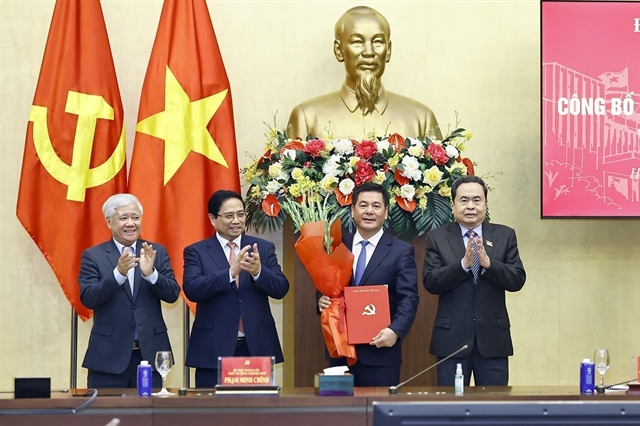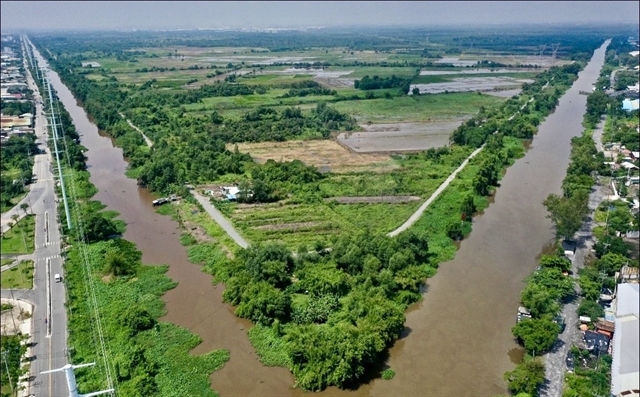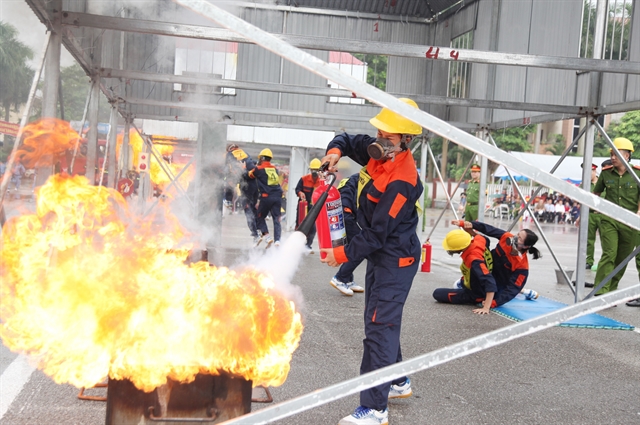 Society
Society

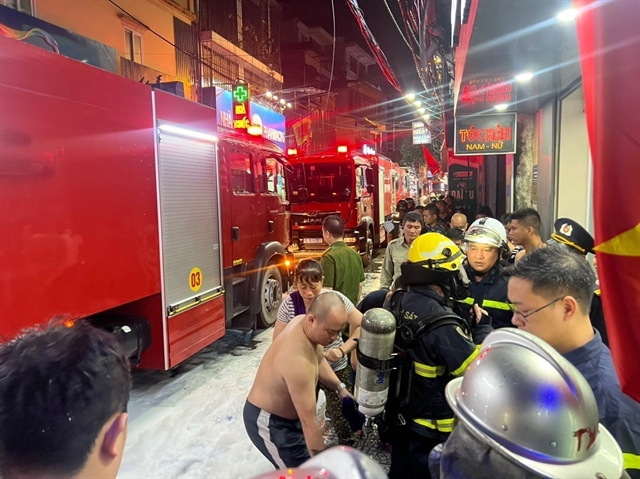 |
| Fire rescue teams at a fatal blaze in Hoàng Mai District, Hà Nội on Sunday last week. — VNA/VNS Photo Phạm Kiên |
HÀ NỘI — The draft law on firefighting, safety and rescue was presented to the National Assembly (NA) on Wednesday, aiming to create a sound legal basis to prevent accidents in the wake of several recent devastating fires.
Presenting the report under the authorisation of the Prime Minister, public security minister Lương Tam Quang said that the legal document is crucial to institutionalise the Party's views, policies and guidelines for fire safety.
Fire prevention and safety in the community remains a critical concern, with a lack of specific frameworks and guidelines to ensure comprehensive management from the national to local levels, as well as limited engagement from businesses and the public.
Meanwhile, rescue activities will directly impact people and their rights, such as medical measures and the demolition of obstacles to ensure exit routes in case of emergency.
Rescue in the draft document is not limited to fires, but also includes other emergencies such as building collapses, landslides or drowning.
Unlike fire-related rescues, these rescue activities are not yet included in the laws, leading to incompatibility among legal documents.
Serious fires that occurred recently also raise concerns about new types of buildings in large cities and densely populated urban areas, with severe damage to local people and assets as well as social security and order.
Minister Quang said: “This situation called for urgent measures to strengthen state management in fire safety, as well as a revision of the current regulations on fire safety.
“This is to ensure a sound legal basis for effective state management of fire safety and prevention in practice.”
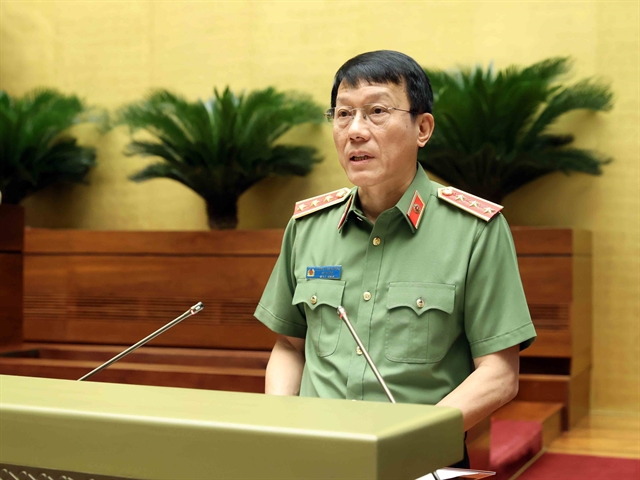 |
| Minister of Public Security Lương Tam Quang reports on the draft law project at the National Assembly meeting on Wednesday. — VNA/VNS Photo An Đăng |
In addition to creating a safe environment for development, the law is also expected to accelerate administrative reforms and the division of responsibilities in firefighting and fire prevention as well as rescue activities.
The draft has nine chapters and 65 articles, including regulations on required fire safety measures for business and production as well as measures on the management, supply and use of energy and electrical equipment.
While agreeing with the need to promulgate the draft law, the NA Committee for National Defence and Security requested that the document include additional regulations on fire safety infrastructure in alignment with other national, regional and provincial plans.
Committee chairman Lê Tấn Tới added that there are suggestions to supplement regulations on disseminating knowledge and skills on fire safety and rescue activities, organising fire drills and policies to ensure resources for these missions.
“The (NA) Committee for National Defence and Security agrees in principle with the draft law and requests further research and adjustment regarding the above topics, with priority given to education and communication about fire safety and rescue in schools,” said Tới.
The document should also specify fire safety requirements for different types of building designs as well as the application of safety standards and conditions for each type of construction.
It should also ensure consistency among regulations regarding authority, responsibility, procedures and roles in inspections and appraisals for fire safety.
According to recommendations, the responsibility for appraising fire safety should be assigned to the construction project's head investor and owner of construction vehicles.
The drafting committee must also evaluate how fire safety regulations and requirements impact housing, vehicles and buildings in practice.
Other suggestions note that these safety measures must be designed to suit different types of businesses, especially those that combine homes and business.
Regulations on the management of electric vehicles are also expected to be included in the document.
The NA Committee for National Defence and Security also noted that current legal documents should be reviewed for reasonable allocations of firefighting and rescue teams, without complicating or overlapping tasks and responsibilities. — VNS

